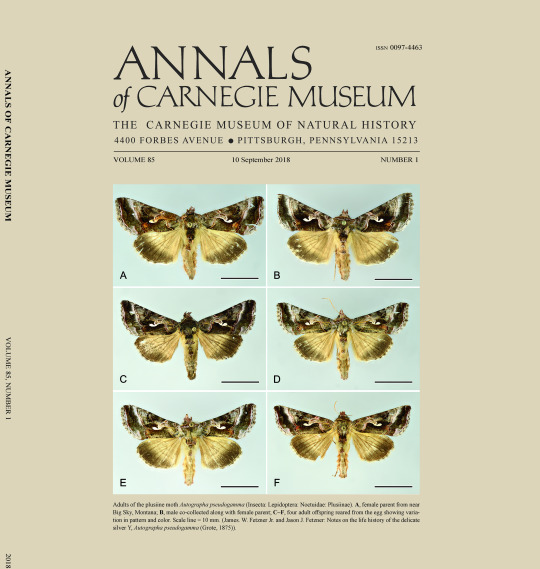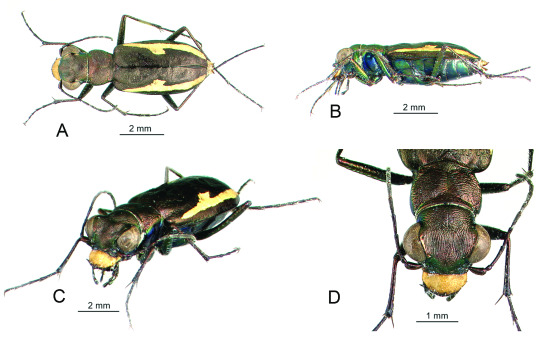by John Wible
The newest issue of Annals of Carnegie Museum, our quarterly scientific journal highlighting museum research and collections, is hot off the presses. The cover is graced by photographs of a beautiful moth from Montana that was hand reared and studied by Curator James W. Fetzner Jr. and his nine-year-old son Jason. They report on this animal’s life history, previously unknown to science. Check out more about Jim and Jason’s study.

Another article by Research Associate Robert Acciavatti from the Section of Invertebrate Zoology and co-authors documents an amazing tale of scientific rediscovery regarding an extremely rare tiger beetle species from Durango, Mexico, named Cylindera nudata. The first and only known specimen of the species ended up in Germany where it was described in 1879. This beetle was one of the countless tragedies of World War II when it was lost from the Natural History Museum in Hamburg during the Allied bombing of that city. As the only known specimen, this one was designated as the holotype of the species, the specimen upon which the description and name of the species was based.
Holotypes are critically important because scientists compare other specimens to the holotype to discover if they belong to the same species or not. You can imagine that when the holotype is lost and no other specimens are known, making comparisons can only be done with whatever descriptions exist in the literature. And for this particular tiger beetle, there was only the original description in German and a line drawing that did not match the description!
Over the years, collecting expeditions to the locality of the holotype (or type locality) went searching for this beetle but came up empty or worse, being unable to reach the remote mountainous area of Mexico of the type locality. In a shipment of beetles collected from Mexico to Acciavatti, amazingly enough there was one specimen that matched the original description of Cylindera nudata. In this new article in the current Annals, that specimen is described, illustrated, and designated as the neotype of the species, which means it is the new type of the species as the old type no longer exists. Acciavatti has donated this specimen to Carnegie Museum of Natural History, and we will preserve it for future generations who will hopefully find more examples of this beautiful beetle and will need a neotype to compare to.

John Wible, PhD, is the curator of the Section of Mammals at Carnegie Museum of Natural History and editor of Annals of Carnegie Museum. John’s research is focused on the tree of life of mammals, understanding the evolutionary relationships between living and extinct taxa, and how the mammalian fauna on Earth got to be the way it is today. He uses his expertise on the anatomy of living mammals to reconstruct the lifeways of extinct mammals. John lives with his wife and two sons in a house full of cats and rabbits in Ross Township.
